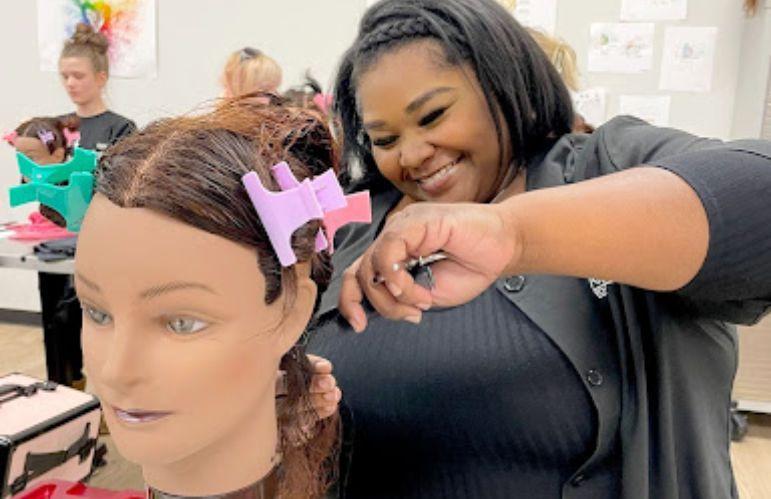Notifications

7 minutes, 6 seconds
-10 Views 0 Comments 0 Likes 0 Reviews

Entering the beauty industry is an exciting and creative journey, but it all begins with one crucial decision: choosing the right beauty school. With hundreds of cosmetology and beauty training institutions available today, it’s easy to feel overwhelmed. Unfortunately, many students rush into enrollment without doing enough research—leading to wasted time, money, and missed career opportunities.
To help aspiring beauty professionals make smart, informed choices, here are some of the most common mistakes to avoid when choosing a beauty school—along with actionable tips to steer clear of them.
One of the most critical factors in selecting a beauty school is accreditation. Accredited schools are recognized by a national or regional accrediting body, which ensures they meet educational standards. Enrolling in a non-accredited school can cause major problems:
Ineligibility for federal financial aid
Poor-quality education
Limited job opportunities
Difficulty transferring credits
What to do instead:
Check if the school is accredited by agencies such as the National Accrediting Commission of Career Arts and Sciences (NACCAS). Their website provides a directory of accredited institutions across the country.
Many students assume that all beauty schools teach the same thing. However, program offerings vary widely. Some focus more on hair design, while others emphasize skincare, nails, or makeup artistry.
Mistake to avoid: Choosing a school without reviewing the course syllabus or aligning it with your career goals.
What to do instead:
Request a copy of the curriculum or program guide. Look for:
Comprehensive training in theory and hands-on practice
State board preparation
Business or salon management modules
Continuing education or advanced classes
If you're passionate about esthetics but the school is hair-focused, you could end up disappointed.
The quality of instruction is only as good as the experience of the instructors. Some schools hire recent graduates or part-time instructors who may not offer industry-level insights or mentorship.
What to do instead:
Ask about instructor qualifications, certifications, and years of experience. Bonus points if instructors are active in the industry (e.g., own a salon, work with clients, or participate in competitions).
Photos on websites and brochures can be misleading. It’s crucial to visit the campus in person to evaluate the facilities, cleanliness, and learning environment.
What to look for:
Modern tools and equipment
Clean, organized classrooms and salon areas
A welcoming, professional vibe
Active student salons with real client interaction
This will give you a realistic preview of your learning experience.
While budget is important, the cheapest option isn’t always the best. Low tuition may mean outdated equipment, inexperienced instructors, or fewer career services.
What to do instead:
Balance cost with value. Consider:
Quality of education
Location
Job placement rates
Alumni success stories
Financial aid availability
Many top schools offer scholarships, grants, or payment plans that make them more accessible.
A quality beauty school does more than just teach—it helps you transition into a successful career. Schools that lack strong career services may leave you struggling after graduation.
What to do instead:
Ask the admissions team:
Do you offer job placement assistance?
What’s your graduation and licensure pass rate?
Are there relationships with local salons or spas?
Do you host industry networking events or job fairs?
Picking the right beauty school includes ensuring you’ll be supported beyond the classroom.
Online reviews, testimonials, and alumni feedback are invaluable. If a school has multiple complaints about unorganized staff, lack of hands-on training, or outdated curriculum, take them seriously.
Where to look:
Google Reviews
Facebook pages
Beauty forums like SalonGeek
YouTube vlogs from former students
Tip: Don’t focus only on 5-star or 1-star reviews. The most helpful insights are often in the middle.
Each state in the U.S. requires beauty professionals to pass a licensing exam. Some schools don’t adequately prepare students for this, leading to delays in starting your career.
What to do instead:
Ensure the school:
Aligns with your state’s licensing requirements
Offers prep classes and mock exams
Has a high licensure exam pass rate
This is a non-negotiable part of your education.
You’ll spend hundreds of hours at school, so it’s important to feel comfortable and supported. A poor environment can kill motivation and make it harder to learn.
Red flags to watch for:
Disorganized administration
Poor communication
Lack of mentorship or support
Toxic or overly competitive atmosphere
Tip: Speak to current students during your campus tour. Ask what they love—and what they would change.
Avoiding these common mistakes can save you from wasted time, frustration, and lost investment. Choosing a beauty school is a major step in launching your career. By researching accreditation, reviewing the curriculum, checking instructor experience, and understanding support services, you'll be better positioned to make the right choice.

